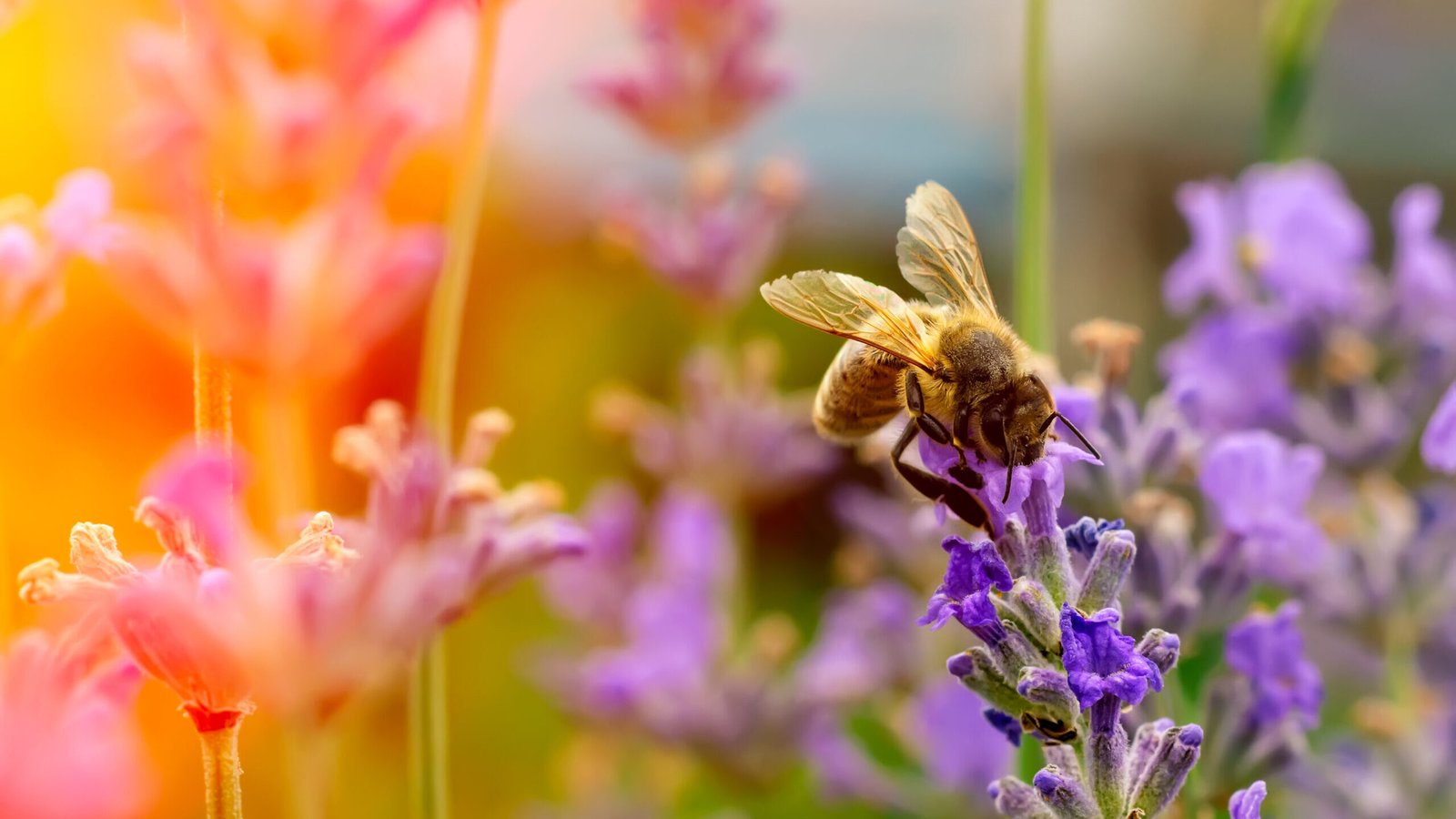Native pollinators are a vital part of our local ecosystem and an important part of the food chain. Pollinator gardener Melissa Strauss has some tips for how you can attract and keep more of these significant helpers in your garden.
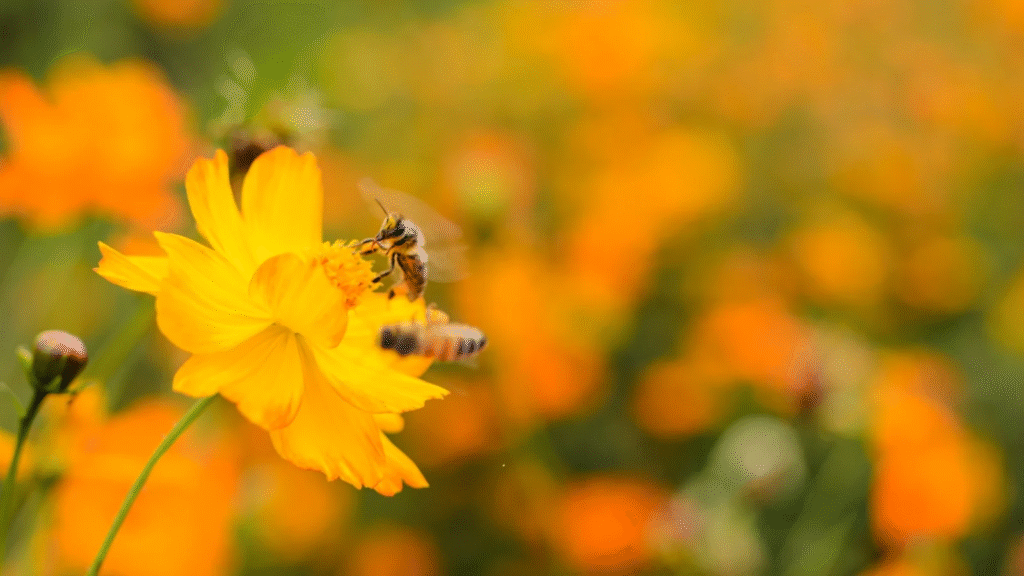
As gardeners, we all understand how vital pollinators are. If you want a thriving garden, attracting these insects and animals is the secret to abundant blooms and a fruitful harvest. They’re a critical part of the food chain from the very beginning, and without them, we’d be in serious trouble.
Native pollinators are especially important because many plants depend on specific creatures to reproduce and flourish. Some, like squash bees, have evolved alongside certain plants—North American squash varieties, for example, rely on these specialized bees for pollination.
Sadly, their numbers are declining, and it’s all because of human activity. Pesticides, habitat destruction, and shifting weather patterns are the main culprits.
We can’t fix the whole world, but in our own gardens, we can make a difference. Here’s how to create a welcoming space for these essential pollinators.
Avoid Using Chemicals
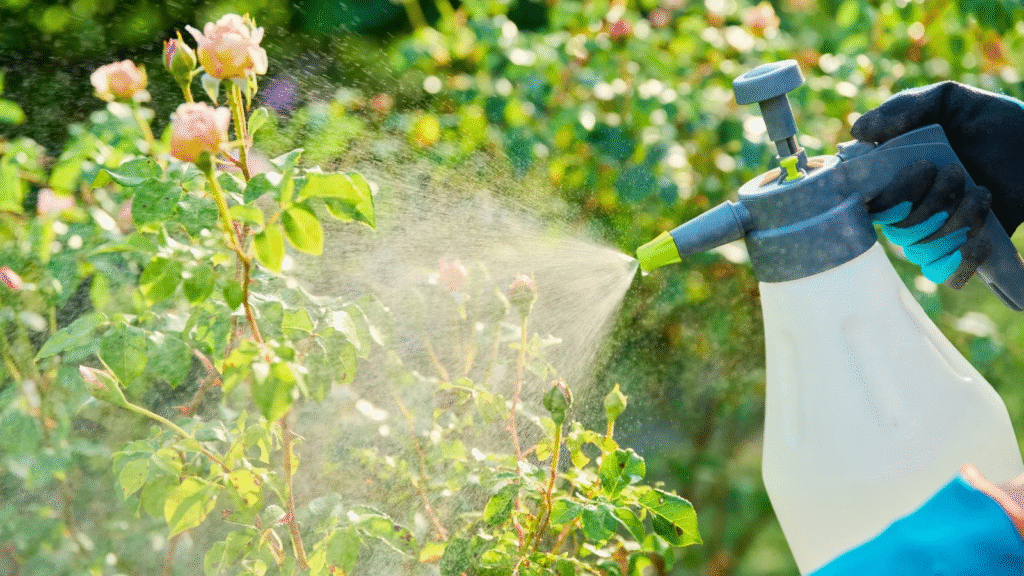
The biggest danger to native pollinators? Systemic insecticides. To attract them, we need chemical-free spaces. If these substances harm humans, imagine what they do to tiny insects and animals that feed on nectar and pollen.
Neonicotinoids are especially deadly. Steer clear of flowering plants treated with them—they’re meant to stop pests but end up killing the beneficial insects that naturally control those pests. It’s a lose-lose situation.
But avoiding neonics isn’t enough. You should also cut back on other pesticides around your home. I get it—this isn’t always easy. Take Florida, where I live. We’ve got palmetto bugs (aka giant flying roaches). If you don’t spray, they invade. But pesticides also scare off—or worse, harm—bees and butterflies.
My solution? A mix of boric acid and cat food (diatomaceous earth works too). Place it near entry points—under sinks, by doors. Bugs eat it, die, and other bugs eat the dead ones, spreading the effect. It’s pet-safe (though boric acid might upset their stomachs) and eco-friendly.
For outdoor pest control, stick to natural options like neem oil or soapy water. Spray at dusk when pollinators aren’t active, and avoid blooming plants—wait until flowers fade.
Plant Native Nectar and Pollen Sources
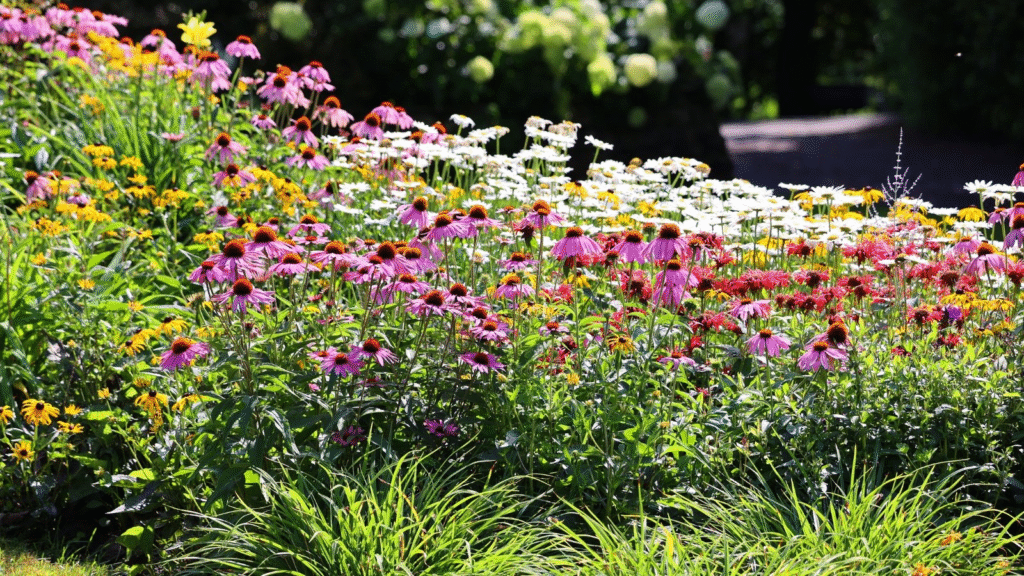
A pesticide-free garden is a good start, but native flowers seal the deal. These plants bloom when pollinators need them most, offering plenty of food.
Since they’re adapted to your area, natives need less water, help clean the water supply, reduce pollution, and improve soil health. Plant a variety, and you’ll have pollinators sticking around all season.
Add Butterfly Host Plants
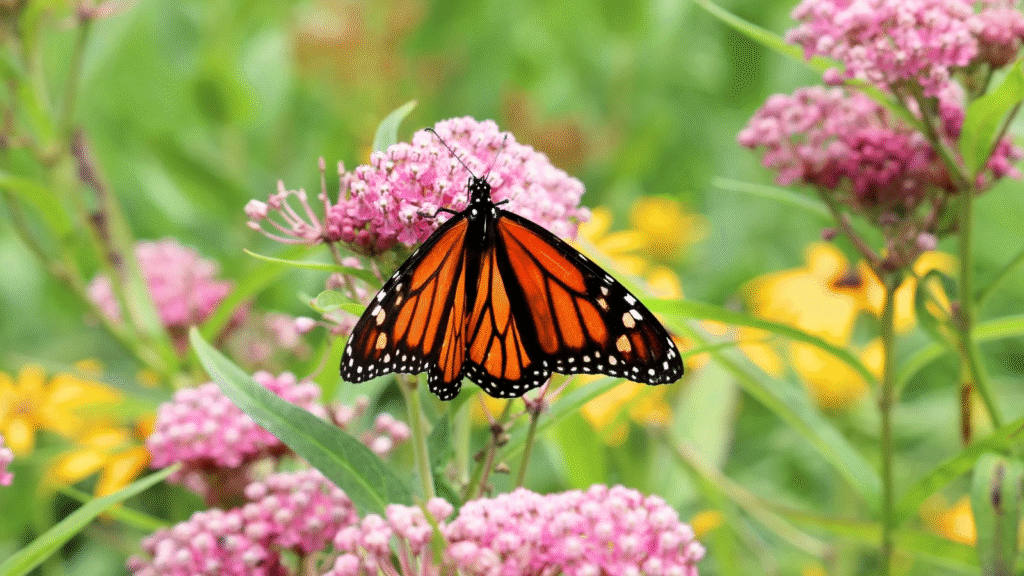
Want butterflies? Plant their baby food. Every species has specific host plants where they lay eggs. These might not be flashy bloomers, but they’re essential.
For example, milkweed is the only host for monarchs. Plant regionally native species—they’re timed perfectly for local butterflies. Pair host plants with nectar sources, and you’ll have a butterfly paradise.
Flowers for Every Season
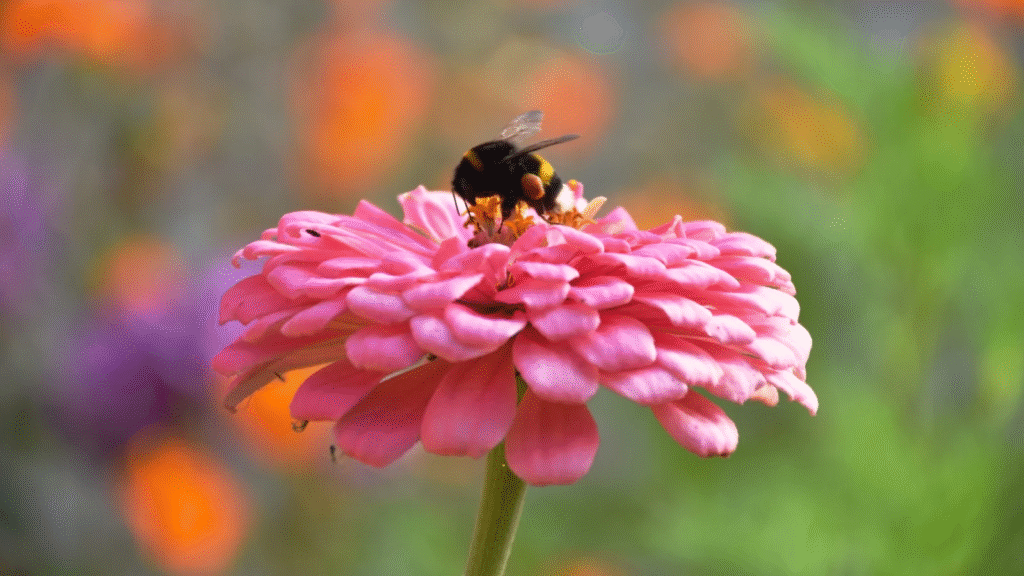
Natives usually cover this, but if you’re just starting, think about bloom times. Focus on gaps when few plants flower—black-eyed Susans and Bidens alba are great for bees.
Now, here’s where I break the rules a little (I’m a beekeeper, after all). I plant some non-natives like cosmos, zinnias, and dahlias because they bloom long and feed pollinators well. Just avoid invasive species—they crowd out natives.
Skip Hybrids (Mostly)
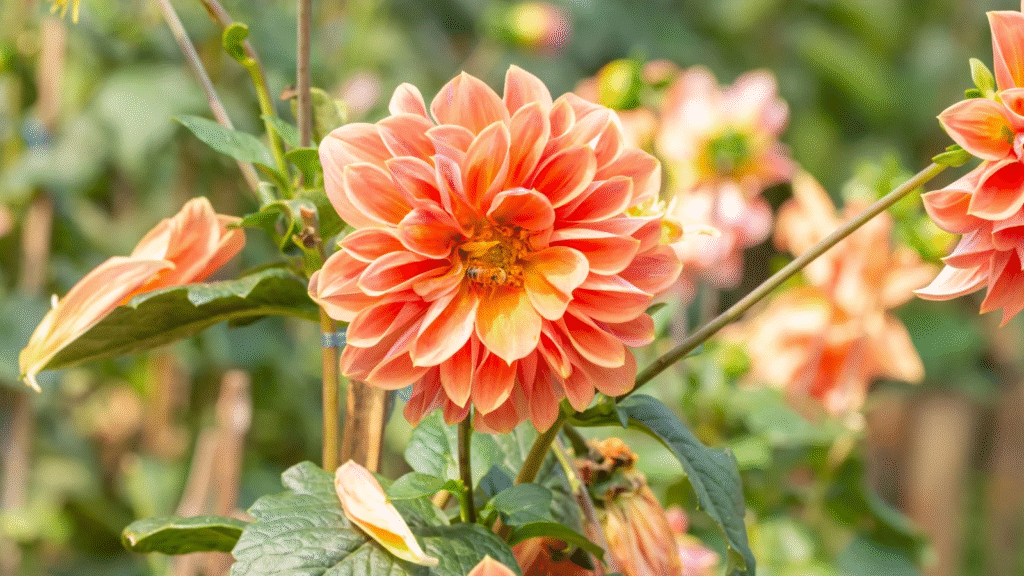
Hybrids are bred for looks, not function. Many have less nectar or pollen, and some are sterile. Fine for decoration, but not for feeding pollinators.
Provide Water
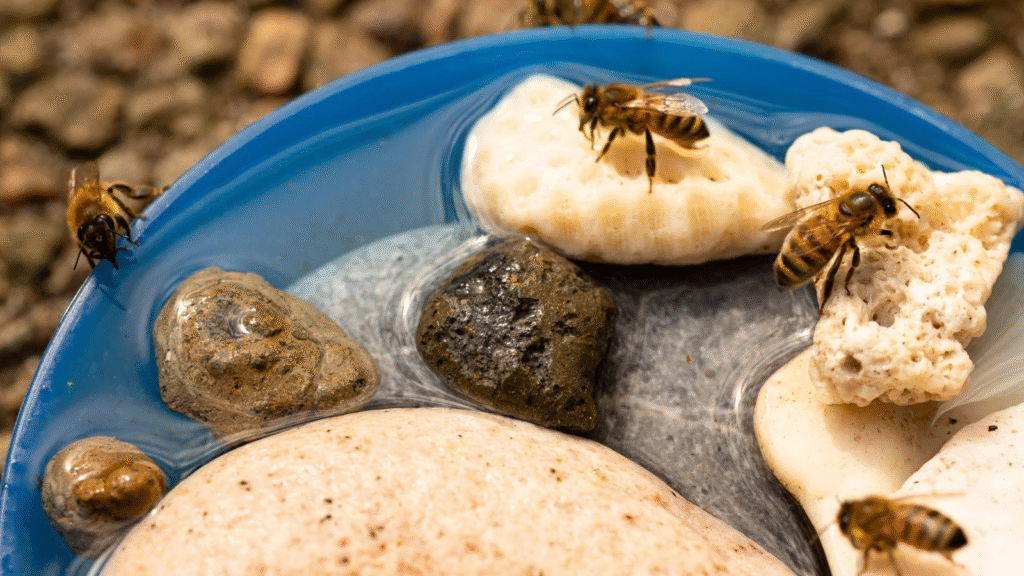
Flying is exhausting! Pollinators need water too. A shallow dish with pebbles (so they don’t drown) works perfectly.
Bees prefer slightly “stinky” water—they find it by smell. I keep a few birdbaths around, and in summer, they’re always buzzing with activity.
Offer Nesting Spots
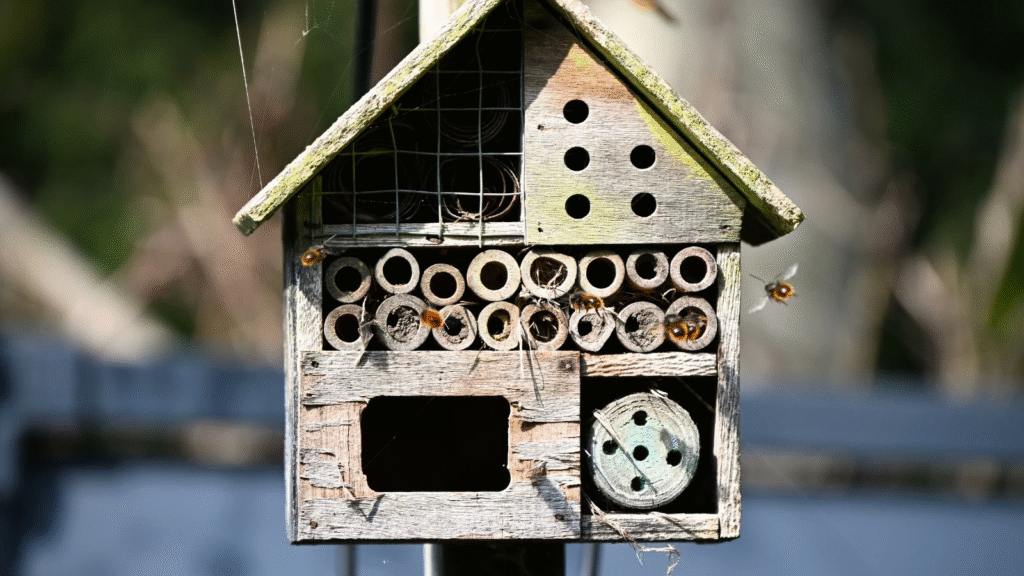
Pollinators stay if they have shelter. Many bees nest in the ground—leave some bare, sunny soil. Piles of rocks, wood, or hollow stems also work.
Leaf litter is a winter haven, so don’t rake until spring. And skip the perfect lawn—turf grass is too dense for ground-nesting bees. A simple nesting box with garden materials can also help.

